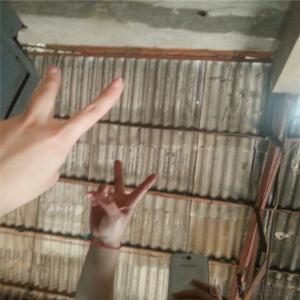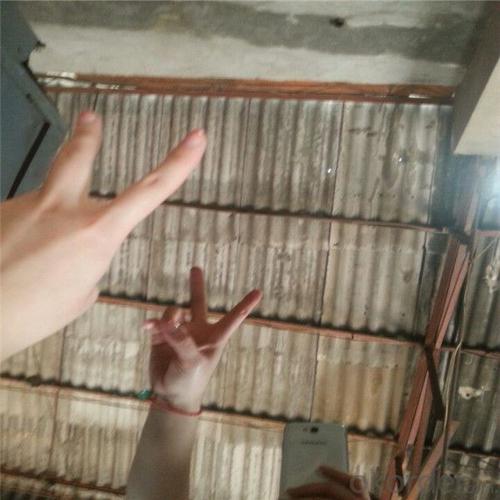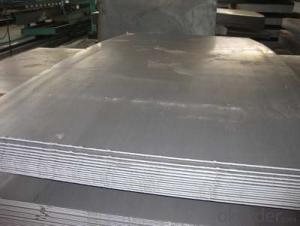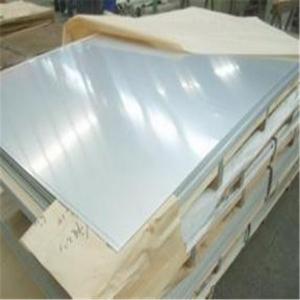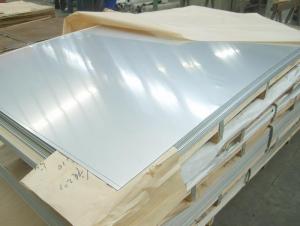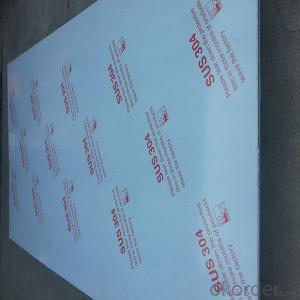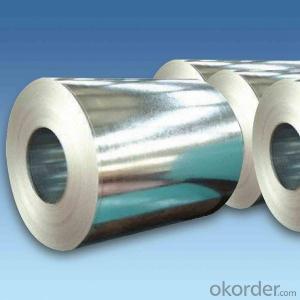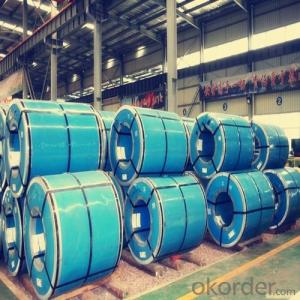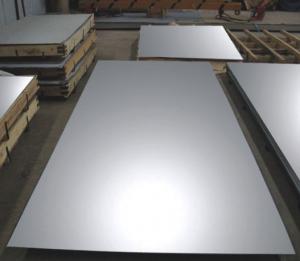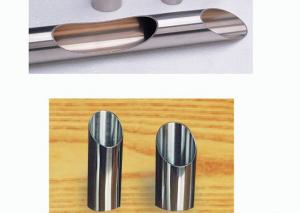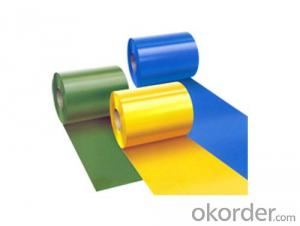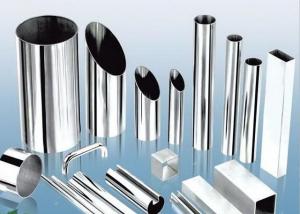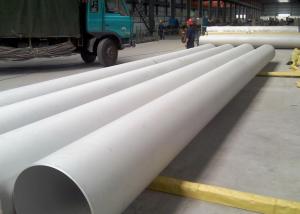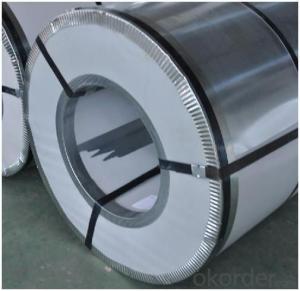409 stainless steel sheetsCold rolled/hot rolled
- Loading Port:
- Shanghai
- Payment Terms:
- TT OR LC
- Min Order Qty:
- 1 m.t.
- Supply Capability:
- 5000 m.t./month
OKorder Service Pledge
OKorder Financial Service
You Might Also Like
Specification
Quick Details:
Name: AISI 316/JIS SUS316 Stainless Steel Sheet
Place of Origin:Liaoning,China Brand Name:Dongbei Tegang
Shape:sheet Material:Stainless Steel
Steel Grade: AISI 316/JIS SUS316/GB 0Cr17Ni12Mo2
Size:Thickness:;width:1m~1.25m;length:2m~2.25m
Application: Engine blade for plane, cartridge receiver, fasterners, combustion chamber, aviation, discs, shaft, outside wall of combustion chamber, liquid oxygen-kerosne diesel, shell, cyclinder, propelling unit, spaceflight, aviation, atomice energy, nuclear energy, petroleum, chemicalsk, marine development.
Chemical composition
C | Si | Mn | P | S | Ni | Cr | Mo |
≤0.08 | ≤1.00 | ≤2.00 | ≤0.035 | ≤0.030 | 10.00~14.00 | 16.00~18.50 | 2.00~3.00 |
Packing&Delivery:
Packaging details: According to customer's require or export's standard
Delivery Time: In 30days after we receive 30% deposite
Port: Dalian
MOQ: 1TON
Standard:
| ASTM | USA | Ameirican Society of Mechanical Engineers |
| AISI | USA | Acronym of American Iron and Steel Institute |
| JIS | JP | Japanese Industrial Standards |
| DIN | GER | Deutsches Institut für Normung e.V. |
| UNS | USA | Unified Numbering System |
Product Advantages:
1,good machining property
2,heat resistant steel
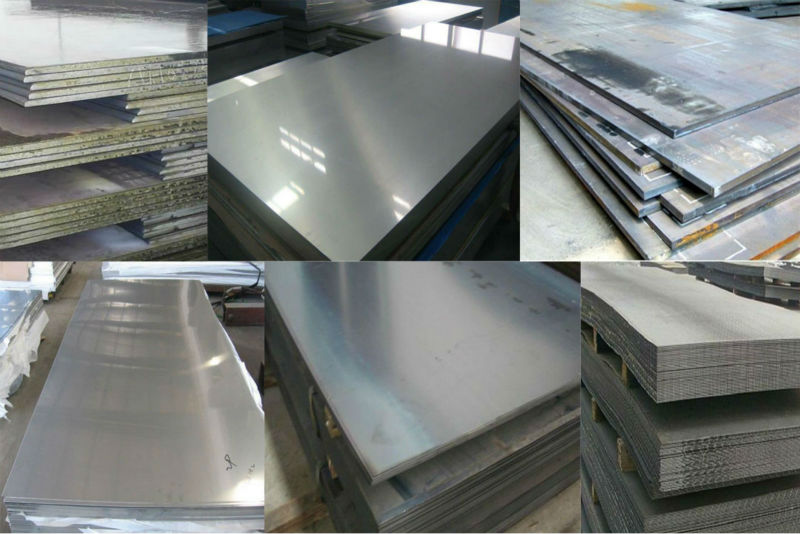
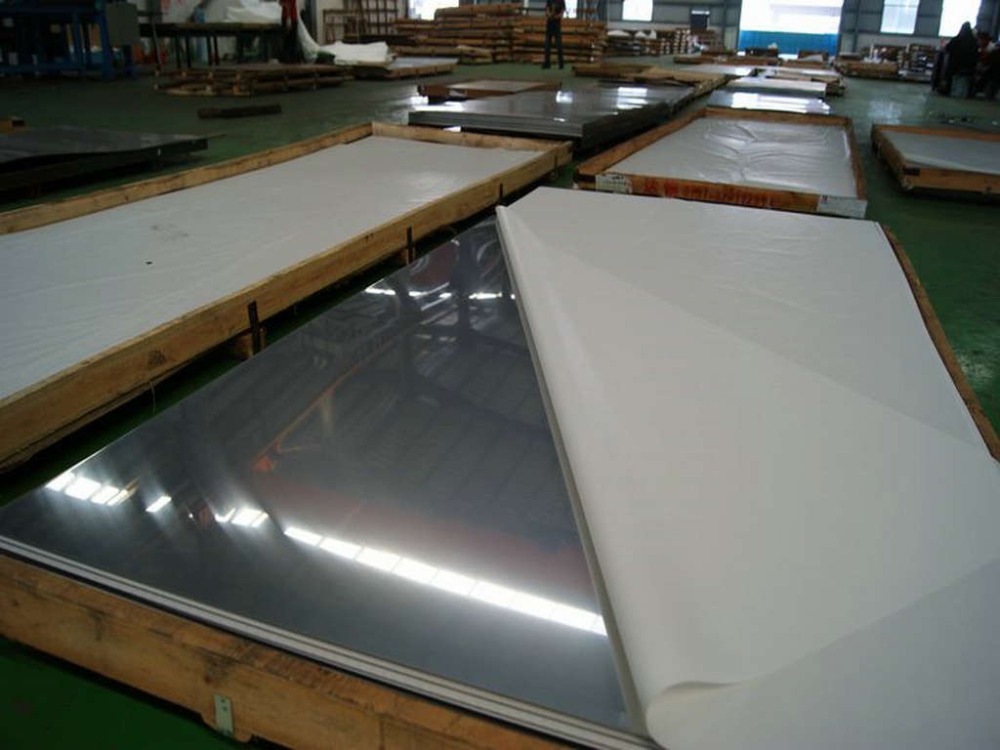
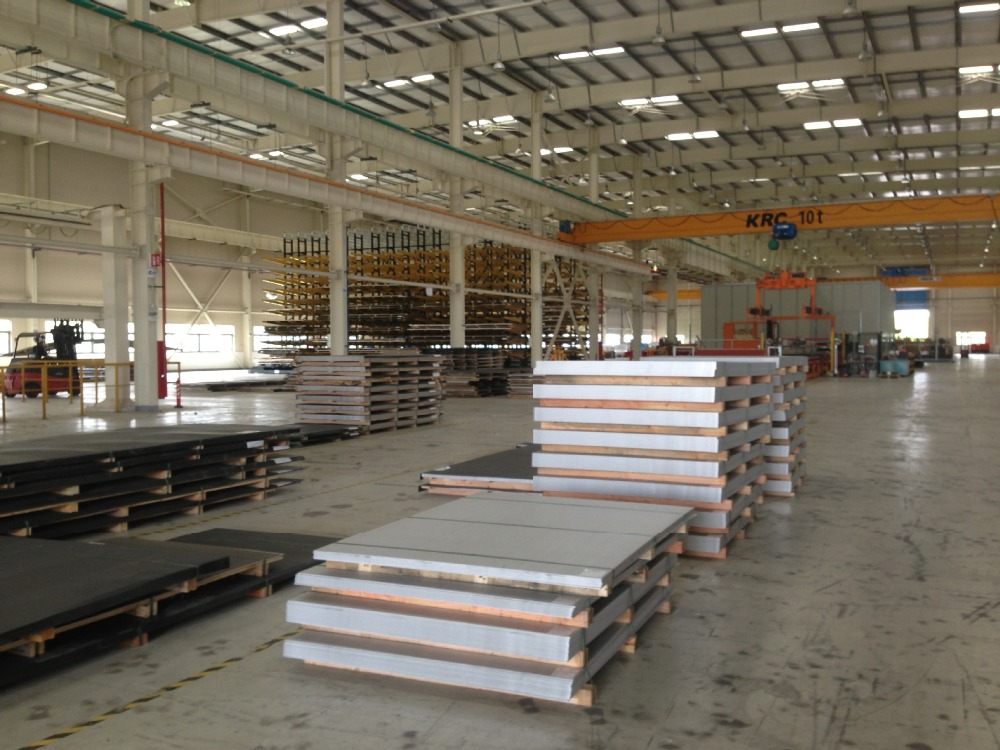
Packaging & Shipping
5.Packaging--stainless steel coils
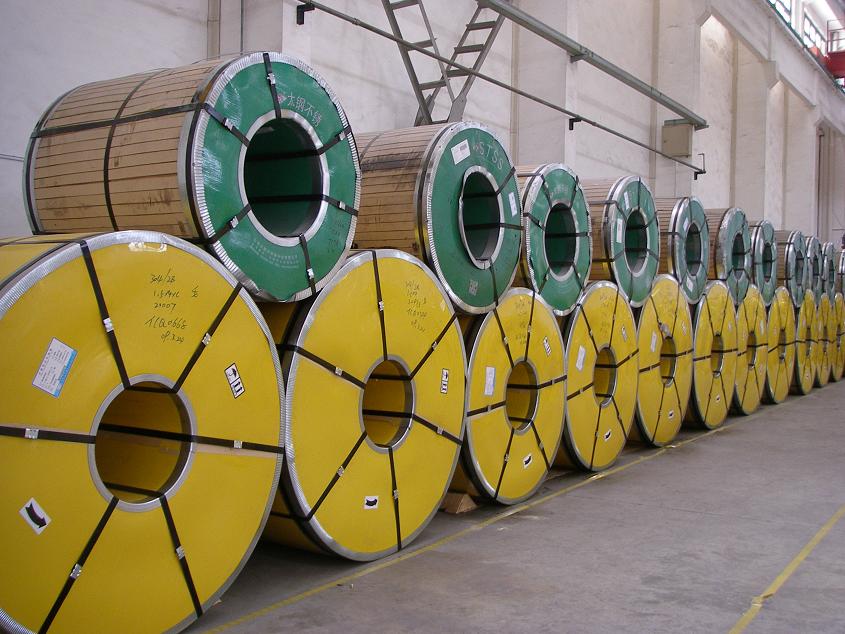
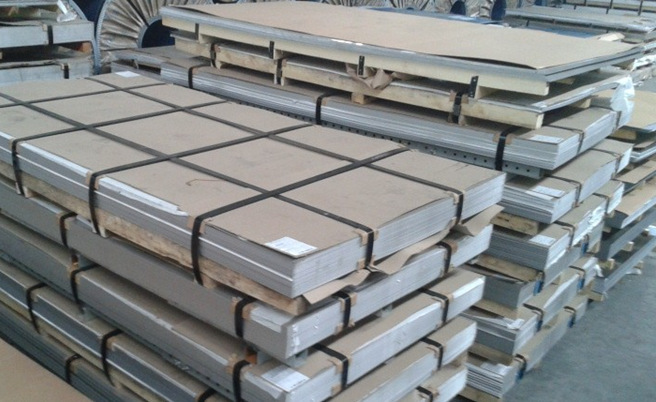
- Q: What is the average lifespan of stainless steel sheets?
- The lifespan of stainless steel sheets can vary depending on factors such as the grade and quality of the stainless steel, the environment in which it is used, and the level of maintenance and care it receives. In general, stainless steel sheets are renowned for their durability and long-lasting nature. They are specifically engineered to withstand corrosion, rust, and other forms of degradation, making them suitable for a wide array of applications. Under ideal conditions and with adequate maintenance, stainless steel sheets can endure for several decades or even longer. However, in harsher environments that expose them to aggressive chemicals, extreme temperatures, or high levels of moisture, their lifespan may be shortened. To ensure the longevity of stainless steel sheets, it is crucial to engage in regular cleaning, proper storage, and routine inspections. By adhering to recommended maintenance practices, stainless steel sheets can deliver reliable performance and endure for an extended period.
- Q: Can stainless steel sheets be used for air conditioning systems?
- Indeed, air conditioning systems can utilize stainless steel sheets. Stainless steel, renowned for its toughness, corrosion resistance, and impressive strength, is a favored material option for various components within air conditioning systems. Specifically, it finds frequent usage in air conditioning ducts, air handling units, heat exchangers, and other components that encounter air or moisture. The stainless steel sheets employed in air conditioning systems usually adhere to a specific grade that suits the intended purpose, thereby guaranteeing peak performance and longevity. All in all, stainless steel sheets represent a dependable and effective selection for air conditioning systems.
- Q: What is the price range of stainless steel sheets?
- The price range of stainless steel sheets can vary depending on factors such as size, thickness, grade, and quantity. Generally, stainless steel sheets can range from around $20 to $200 per sheet.
- Q: How do I prevent galling on stainless steel sheets?
- To avoid galling on stainless steel sheets, there are various actions that can be taken: 1. Use lubrication: Apply a suitable lubricant to the stainless steel sheets, particularly in areas where they come into contact with other surfaces or materials. This will decrease friction and help prevent galling. 2. Avoid similar metals: Galling can occur when stainless steel sheets come into contact with other stainless steel surfaces due to the transfer of metal particles. To prevent this, try using different metals or non-metallic materials that are compatible with stainless steel. 3. Improve surface finish: Ensure that the stainless steel sheets have a smooth surface finish. Rough surfaces can increase friction and the likelihood of galling. Consider utilizing polishing or grinding techniques to achieve a smoother surface. 4. Control contact pressure: Excessive pressure between stainless steel sheets can lead to galling. Minimize contact pressure by adjusting clamping forces or utilizing gaskets, washers, or other materials that distribute the load evenly. 5. Reduce sliding speed: High sliding speeds can contribute to galling. Slow down the movement or apply anti-galling coatings to decrease the risk of galling on stainless steel sheets. 6. Perform regular maintenance: Regularly inspect the stainless steel sheets for signs of wear or damage. Address any issues promptly to prevent further damage that could result in galling. By implementing these preventive measures, the occurrence of galling on stainless steel sheets can be significantly reduced, ensuring their longevity and optimal performance.
- Q: How do you determine the weight of a stainless steel sheet?
- To determine the weight of a stainless steel sheet, you need to know its dimensions (length, width, and thickness) and the density of stainless steel. By multiplying the volume of the sheet (length x width x thickness) with the density, you can calculate its weight.
- Q: What are the different types of stainless steel sheet surface textures available?
- There are several different types of stainless steel sheet surface textures available, each with its own unique aesthetic appeal and functional properties. Some of the most common surface textures include: 1. No.1 Finish: This is the most common and widely used surface finish for stainless steel sheets. It has a smooth, reflective surface that is achieved by hot rolling the steel and then annealing it. 2. No.2B Finish: This finish has a slightly rougher texture compared to No.1 finish. It is achieved by cold rolling the steel and then annealing it, resulting in a dull, matte appearance. 3. No.4 Finish: Also known as satin or brushed finish, this surface texture has a fine grain appearance with short, parallel lines. It is achieved by polishing the surface with abrasive belts or brushes. 4. Hairline Finish: This surface texture is similar to No.4 finish but has a finer grain appearance. It is achieved by polishing the surface with abrasive belts or brushes in a unidirectional pattern. 5. No.8 Mirror Finish: This is the most reflective surface texture available for stainless steel sheets. It has a highly polished and mirror-like appearance, achieved by further polishing the surface after No.4 finish. 6. Bead Blasted Finish: This surface texture is achieved by blasting the stainless steel sheet with fine glass beads or ceramic particles. It results in a textured, non-reflective surface with a uniform matte appearance. 7. Embossed Finish: This surface texture involves imprinting a pattern or design onto the stainless steel sheet. It can be achieved through mechanical embossing or by using a special roller during the manufacturing process. 8. Colored Finishes: Stainless steel sheets can also be coated with various colors to enhance their visual appeal. These colored finishes are achieved through processes like PVD (Physical Vapor Deposition) or powder coating, resulting in a durable and vibrant surface. These are just some of the many surface textures available for stainless steel sheets, each offering its own distinct look and feel. The choice of the surface texture depends on the desired aesthetic, functional requirements, and the specific application of the stainless steel sheet.
- Q: Can stainless steel sheets be used for architectural façades?
- Yes, stainless steel sheets can be used for architectural façades. Stainless steel is a durable and versatile material that offers many advantages for façade applications. It is resistant to corrosion, weathering, and staining, making it an ideal choice for exterior use. Stainless steel sheets can be fabricated into various shapes and sizes, allowing for a wide range of design options. Additionally, stainless steel can be finished in different ways, such as brushed, polished, or colored, providing further aesthetic possibilities. Its strength and rigidity also make it suitable for large-scale installations. Overall, stainless steel sheets offer durability, aesthetic appeal, and design flexibility, making them a popular choice for architectural façades.
- Q: What is the minimum thickness available for stainless steel sheets?
- The minimum thickness available for stainless steel sheets can vary depending on the specific grade and manufacturer. However, in general, stainless steel sheets are commonly available in thicknesses ranging from 0.4mm to 6mm. Some manufacturers may offer even thinner sheets, such as 0.3mm, for specialized applications. It is important to consult with the supplier or manufacturer to determine the exact minimum thickness available for your specific requirements.
- Q: 304 stainless steel plate 1*1219*C what do you mean?
- Roll thickness 1 mm, width 1219 mm, length is unlimited (depending on volume weight). 304 stainless steel is a kind of the most commonly used, law-abiding.
- Q: Can stainless steel sheets be used for medical implant devices?
- Yes, stainless steel sheets can be used for medical implant devices. Stainless steel is a commonly used material in medical implants due to its high strength, corrosion resistance, and biocompatibility. It can be shaped into sheets and fabricated into various implantable medical devices such as orthopedic implants, dental implants, and cardiovascular stents.
Send your message to us
409 stainless steel sheetsCold rolled/hot rolled
- Loading Port:
- Shanghai
- Payment Terms:
- TT OR LC
- Min Order Qty:
- 1 m.t.
- Supply Capability:
- 5000 m.t./month
OKorder Service Pledge
OKorder Financial Service
Similar products
Hot products
Hot Searches
Related keywords
